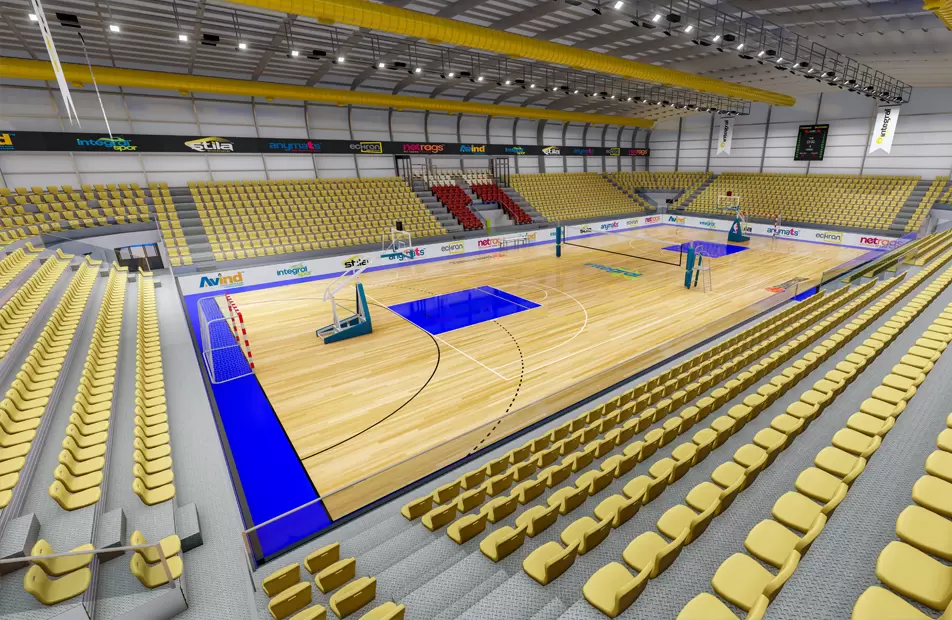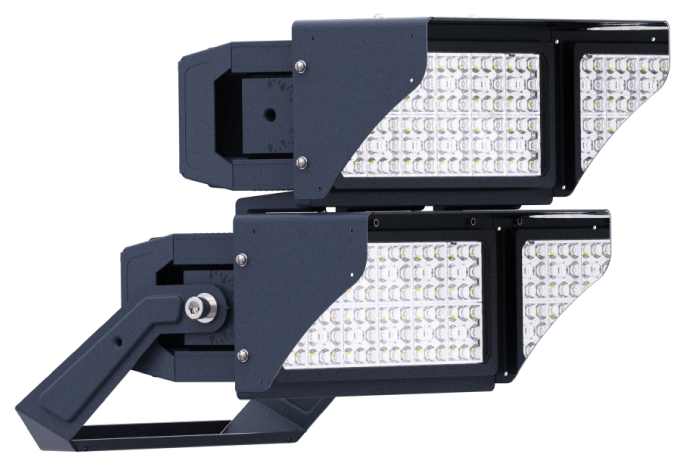Indoor Sports Court Lighting

Directory:
1. Key Aspects of Lighting Design
2. Selection of Lighting Equipment and Facilities
3. Power Distribution Principles
Indoor gymnasiums are required to handle numerous competitive tasks, leading to higher technical standards and increased complexity in lighting design. When creating a lighting plan, it is essential to consider not only the audience's viewing experience but also the athletes' performance and the need for clear judgment by referees. With the rise of large-scale commercial events, live television broadcasts are becoming more common, necessitating attention to how scene colors affect televised images. The indoor sports court lighting is a challenging endeavor that must take into account the structure and materials of the facility, as well as the flooring, space dimensions, illumination levels, temperature, ventilation, and other relevant factors.
1. Key Aspects of Lighting Design
1.1 Influential Factors in Indoor Sport Court Lighting
(1) Illumination
A well-planned illumination design is crucial for athletes to perform optimally, for referees to make accurate calls, and for enhancing audience comfort. Moreover, indoor sport court lighting designs should not be one-size-fits-all; they must be tailored to the specific requirements of different sports events and commercial activities.
(2) Illumination Uniformity
Illumination uniformity refers to the ratio of the minimum to maximum illumination levels. Indoor and outdoor gymnasiums have distinct lighting needs. Applying the same design approach to both can lead to uneven lighting, where some areas are overly bright while others are insufficiently lit. Excessive brightness can cause glare, which can significantly hinder athletes' performance. Therefore, achieving uniform lighting is a critical consideration in sport court lighting design.
(3) Glare
An unbalanced and poorly designed brightness distribution in indoor sport court lighting can create visual discomfort due to spatial and temporal contrast, negatively impacting both the visual experience and athletes' performance. This is particularly critical in ball sports, where glare can hinder athletes' ability to accurately judge the landing point of the ball, ultimately affecting the outcome of the game.
(4) Light Distribution
Indoor gymnasiums are typically divided into competition zones and spectator areas. When planning the lighting for an indoor gym, focusing solely on the playing surface can result in adequate illumination for athletes but insufficient lighting for the audience. Thus, the initial step in designing the gym's lighting is to establish how lights will be distributed across all areas to fulfill the lighting requirements for both players and spectators.
(5) Light Source Characteristics
A light source with a high color rendering index will accurately represent colors when illuminating objects, while a lower index may lead to distorted appearances. Therefore, it is important to select a light source with a high color rendering index to ensure that athletes can make precise judgments and that the game is presented effectively.
1.2 Illumination Requirements
When planning the indoor sport court lighting, it is essential to take into account the illumination needs of athletes, spectators, photographers, and others. The vertical illumination along the sidelines is typically used as a design benchmark. Ideally, the most comfortable visual experience is achieved when horizontal illumination and vertical angles are equal. However, in practice, achieving perfect equality is challenging, so efforts should be made to keep the ratio between the two as close as possible. Generally, the ratio of horizontal to vertical illumination should not exceed 2:1. In a three-dimensional environment like a gymnasium, the lighting's brightness and color contrast must meet specific design standards. Therefore, lighting control points should be calculated using a computer system to ensure uniform illumination, which in turn guarantees that the color temperature and color rendering meet television broadcasting standards.
1.3 Lighting Control and Layout Plan
(1) Lighting Control
The lighting control room in the indoor gymnasium allows for monitoring all lighting conditions in the venue. In case of an emergency, immediate action can be taken. Many gymnasiums have implemented advanced technology, utilizing intelligent control systems to manage the lighting. The more versatile the gymnasium, the greater the lighting requirements. An intelligent control system enhances operational convenience for staff and improves lighting management.
(2) Lighting Layout Plan
Before starting the design, it is important to analyze the gymnasium's floor plan and use a computer system to evaluate the design proposal, leading to a lighting layout and mode plan. The design process must consider the requirements for various event levels as well as daily commercial activities.
① Horse Track Layout
Based on the horse track's configuration, lights are installed on both sides of the track.
② Emergency Lighting Layout
The design must account for unexpected situations. In the event of a sudden power outage, it is crucial to ensure that the backup power supply can adequately support emergency lighting and facilitate the safe evacuation of athletes and spectators.
2. Selection of Lighting Equipment and Facilities
2.1 Lamps
High-efficiency LED flood lights for stadiums feature a large heat dissipation area and excellent thermal conductivity, which helps manage temperature increases and prolongs lamp lifespan. These lamps are also lightweight and safe, making them widely utilized.
Ceramiclite led flood light

2.2 Lamp Accessories
(1) Only lamps from reputable manufacturers and brands that comply with lighting standards should be chosen.
(2) The specific lighting requirements of the venue must be taken into account to ensure optimal lighting performance.
(3) In environments with corrosive gases or steam, it is advisable to select anti-corrosion sealed lamps.
(4) For venues hosting commercial activities that involve significant vibrations, vibration-proof lamps should be chosen, along with appropriate anti-fall measures.
(5) If UV radiation needs to be minimized, lamps with UV-blocking capabilities or non-UV light sources should be selected.
(6) When lamps need to be installed on flammable surfaces, those marked with an "F" should be used.
3. Power Distribution Principles
The power supply for the competition venue must meet load requirements, typically reaching a first-level load. Generally, two power supplies are managed through a two-section busbar segmented operation, allowing one to take over if the other fails. To ensure the lighting system operates effectively, each power supply is usually connected to 50% of the venue's lighting load, with alternating power supplies to prevent total power outages. To address the stroboscopic effect of gas discharge lamps, terminal reactive power compensation measures are typically implemented.
Indoor sport court lighting design is a complex task that must consider both the level of competition and the lighting needs for various commercial activities. It is essential to create multiple control modes based on actual requirements and to develop different illumination strategies to achieve optimal lighting results.